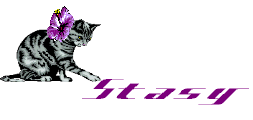


PAUL ELLIS: Silent Conversations (CD on Groove Unlimited)
This release from 2005 offers 76 minutes of gripping electronic music.
Joining Paul Ellis (who plays synthesizers, guitar, bass, rhythmic processing, tron flutes, and Rhodes) on this recording are: Steve Roach on synths, processing and rhythmic programming, Jeffrey Koepper on processing, Will Merkle on bass, Otso Pakarinen on synths, Laurie Guild on flute, Brenda Erikson on cello, and Alison O'Connor on vocals. The music was mastered by Ron Boots.
Delicate keyboards blend with flowing textures, producing a lush but soothing climate. Surging patterns provide tasty density, augmenting the quite infectious influence of non-percussive rhythms. While crystalline structure spiral overhead, pensive embellishments coalesce with charming results. Astral illusions waft in the sonic wind, evoking stratospheric expanses of limitless potential. One can easily get lost in the electronic ballet of riffs as they frolic and interweave, generating a pleasant, celebratory quality.
Cyclic chords establish sedative foundations which are then augmented with more demonstrative loops, creating commanding soundscapes of generous proportion. Subtle bass notes punctuate the flow, establishing a thrilling demeanor and furnishing the tuneage with a touch of the unpredictable.
Classical instruments lend a fanciful airiness to a few tracks, while lazy guitars provide a romantic edge.
Heavenly music is the motif here, with lavish soundscapes unfurling to envelope the audience in their shimmering sonic embrace. A sense of passive introspection maintains itself despite the bias of sweeping chords which seek to captivate with their invigorating allure.

JONATHAN GEER: Essex (CD on Geer Music)
This release from 2005 features 44 minutes of classically tinged electronic music.
Flutes play a vital role in this music, accompanying electronics and orchestral elements to define pleasant tuneage. Ambient textures blend with more dramatic tones to achieve a lush soundscape that often displays edgy qualities. Frequent piano passages punctuate this flow, injecting a valiant humanity to the crisp pieces.
The compositions are pensive and soothing, designed for serenity (with a touch of impending tension) and to conjure geographic locales of a seaside nature. Specifically, the music on "Essex" was inspired by the tale of the Nantucket whaling ship of the same name. A gripping excursion of courage and battling the elements is excellently captured by these songs. Geer superbly employs a mixture of electronic and orchestral strains to maintain a constant level of lively intrigue.
Some of the tracks utilize eerie effects to establish their seafaring mien, while sawing violins provide a taste of anxiety. Choirs herald moments of celebration as the ship's survivors reach an island and await their rescue.
Imagine a fusion of instrumental Bjork and Chopin.

KAGERMAN, KELLER, SCHÖNWÄLDER& FRIENDS: The Liquid Session (CD on Manikin Records)
This release from 2005 offers 56 minutes of calming electronic music recorded live at the Liquid Sound Festival at the Toskana Therme, Bad Sulza on November 8, 2003.
Mario Schönwälder, Detlef Keller (both on synths) and Thomas Kagerman (on violin) are joined by “friends”: Bas Broekhuis (on percussion), Gerd Wienekamp (from Rainbow Serpent) and Chris Lang (both on synths), and Andrea Saphira Leonhardi (on ethereal voice).
Employing gradually building strains in an improvisational milieu, the performers generate a distinguished dose of soothing sonics that steadfastly mounts in density and passion. Languid textures coalesce while percussion lurks with subtle presence. Violin drones enter the mix, flavoring the tuneage with a classical edge and injecting a romantic flair with melancholy definition.
Vocal intonations enter with the beginning of the second of the three long tracks. The violin adopts a more pensive mood as the sonic flow continues. A particularly fluid sound flourishes while the percussion takes a break. Crystalline chimes season the liquid progression. As the piece reaches its conclusion, the percussion reemerges with slow beats, foreshadowing a transition to an even sparser soundscape.
The final track maintains this serenity for a long time, while the violin meanders through the flow like an enraptured gypsy. The piece gains an increasing but restrained tension as the performers forge an enduring covenant of tranquil vigor.
From the liner notes, we learn that Kagerman’s involvement was unplanned, making the manner in which his violin gels with the rest of the music quite remarkable, a true testament to improvisational mastery.

| Entire page © 2005 Matt Howarth. All rights reserved. |
Webpage design by
 |